I have a continuous input signal with a very high impedance and I need an output signal with a low impedance of 50Ω. That's why I've considered the LM7171 (High Output Current: 100 mA).
I've tried to make the following non-inverser amplifier using a LM7171 (the datasheet suggests to make an amplifier rather than just a voltage follower):
simulate this circuit – Schematic created using CircuitLab
Unfortunately, I've enormous and fast oscillations of the output (*10):
With an input of 3V:
Why and what could I do ? Thanks !
EDIT (16/01)
The input signal comes from a NI BNC 2110.
|V+|=|V-|=15V
EDIT (17/01)
I've made some changes to my circuit according to Neil_UK recommendations (from the datasheet), plus I've tried a resistor 10kΩ between the ground and the output.
However, the problem still remains... I'll say you if I succeed in solving this.
